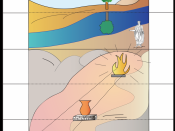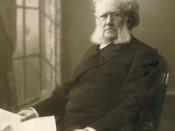The Allegory Man of the PeoplePlato utilizes The Allegory of the Cave in his writings The Public. It is a depiction of the nature of the education of man and the need for education in the society. Robert Bolt wrote the second play, The Man for All Season, and finally, the third writing, An Enemy of the People, is written by Henrik Ibsen. A comparison will also be made between the lead characters of the last two plays. The writer will compare Sir Thomas More from A Man for All Seasons with Dr. Thomas Stockmann, the lead character from An Enemy of the People. A comparison between the characters of the two men will reveal that Sir More is a greater man than Dr. Stockmann.
The Allegory of the Cave is about a group of people who have lived in a cave since their childhood. These people not only live in this cave, but they are also chained and made to face a blank wall.
Even their heads are shackled such that they cannot look behind them or at the sides. On the blank wall in front of them, a fire that is behind them projects shadows of objects that are passing behind them. When one of them is released to the outside world, the people who remain in the cave do not believe the version of the story concerning the reality of the shadows they have spent the whole of their lives watching and analyzing.
According to Plato, the chained people represent the uneducated and uninformed men in the society (Warmington 119). Behind them and directly in front of the fire, people walk on a raised platform, thus projecting the shadows and echoes on the blank wall. These are the leaders in the today society and those other...


